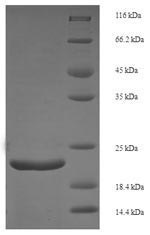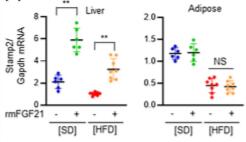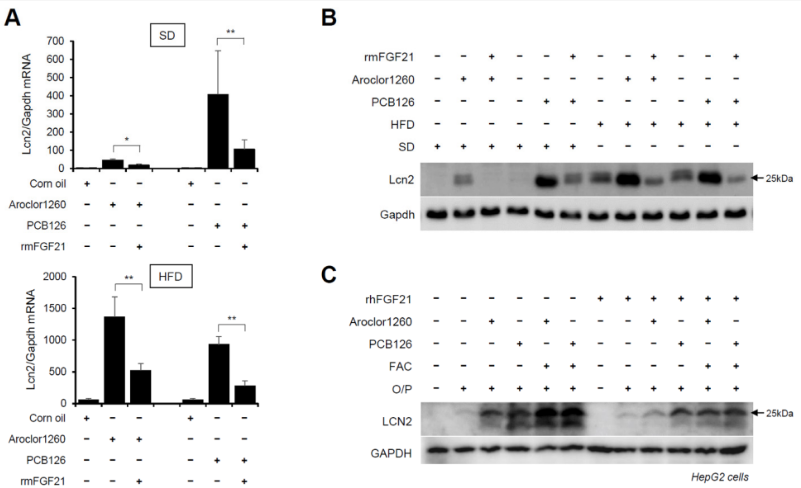The preparation of Recombinant Mouse Fgf21 protein included 3 main steps: construct the expression vector, expression of protein of interest, and protein purification. Every step was performed under a strict QC system so that we got the premium protein. This Fgf21 was expressed in E.coli at and fused with N-terminal 6xHis tag. According to SDS-PAGE, the purity turns out to be 90%+.
FGF21 is a peptide hormone that is synthesized by several organs and regulates energy homeostasis. Excitement surrounding this relatively recently identified hormone is based on the documented metabolic beneficial effects of FGF21, which include weight loss and improved glycemia. The biology of FGF21 is intrinsically complicated owing to its diverse metabolic functions in multiple target organs and its ability to act as an autocrine, paracrine, and endocrine factor. In the liver, FGF21 plays an important role in the regulation of fatty acid oxidation both in the fasted state and in mice consuming a high-fat, low-carbohydrate ketogenic diet. FGF21 also regulates fatty acid metabolism in mice consuming a diet that promotes hepatic lipotoxicity. In white adipose tissue (WAT), FGF21 regulates aspects of glucose metabolism, and in susceptible WAT depots, it can cause browning. This peptide is highly expressed in the pancreas, where it appears to play an anti-inflammatory role in experimental pancreatitis. It also has an anti-inflammatory role in cardiac muscle. Although typically not expressed in skeletal muscle, FGF21 is induced in situations of muscle stress, particularly mitochondrial myopathies. FGF21 has been proposed as a novel therapeutic for metabolic complications such as diabetes and fatty liver disease.








